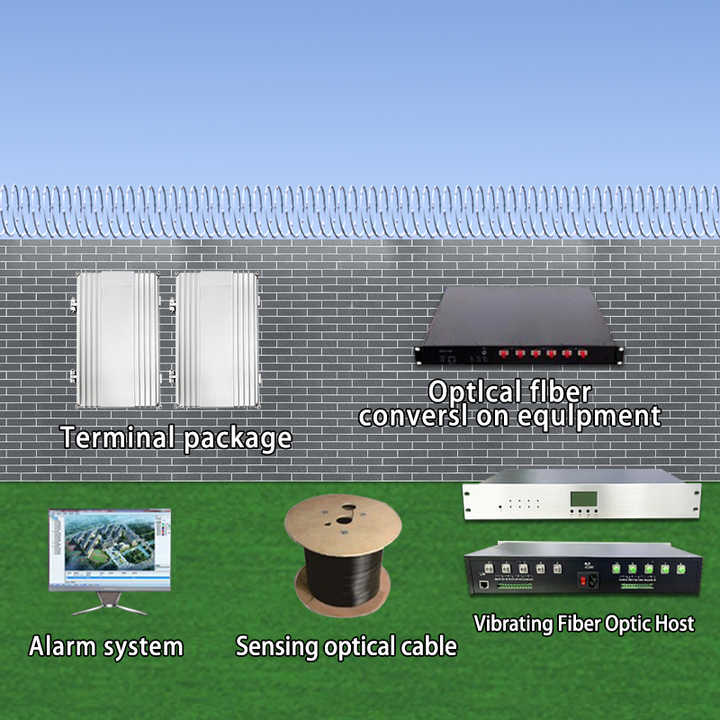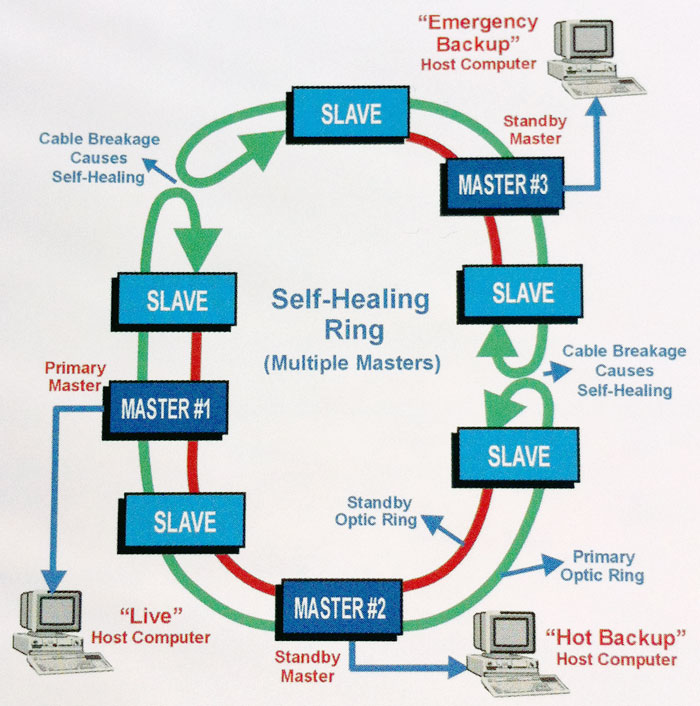How Fiber Security Helps Prevent Intrusions and Boosts Monitoring
How Fiber Security Helps Prevent Intrusions and Boosts Monitoring
Blog Article
Why Fiber Optic Safety Systems Are the Future of Protection
The shift to fiber optic security systems marks a substantial improvement in the realm of protection, driven by their remarkable data transmission abilities and resilience to external disturbances. These systems not just help with faster and a lot more trusted communication yet likewise provide an economical remedy with minimized maintenance requirements. As the landscape of safety and security develops along with arising modern technologies such as AI and IoT, the capacity for optical fiber to boost and redefine safety and security infrastructures becomes progressively noticeable. Nevertheless, the ramifications of these innovations raise critical inquiries about the future of protection procedures and their efficiency in an ever-changing atmosphere.
Benefits of Fiber Optic Equipments
One of the primary benefits of fiber optic systems is their superior data transfer capacity, which assists in the transmission of large volumes of information over lengthy ranges without substantial loss. This characteristic is especially useful for safety applications that need the continual tracking and transfer of high-def video feeds, sensor information, and other important info. Optical fiber can suit the expanding demands of modern safety systems, ensuring that information stays undamaged and trusted.
Additionally, fiber optic cords are much less at risk to electromagnetic disturbance, which can be a substantial concern in atmospheres with various electronic tools. This resistance boosts the integrity of the data being transmitted, therefore minimizing the danger of data violations or system failures. Furthermore, fiber optic systems are inherently extra safe and secure than standard copper cords, as taking advantage of a fiber optic line without detection is exceedingly difficult.
The longevity of fiber optic cables additionally adds to their allure. They are immune to ecological variables such as dampness and temperature level fluctuations, minimizing upkeep prices and boosting system durability. Generally, these benefits placement fiber optic systems as a robust and effective choice for modern safety infrastructures, ensuring reputable and secure data transmission.
Improved Data Transmission Speed

The capability to transmit substantial quantities of data swiftly assists in the smooth combination of high-def video clip feeds and progressed analytics. Safety systems can now process and evaluate info in real-time, enhancing response times and situational understanding. Furthermore, fiber optic links support longer transmission ranges without degradation of signal top quality, making them perfect for large security networks.
The raised speed of fiber optic systems not only enhances the performance of safety procedures however likewise minimizes latency. This is especially essential in important circumstances where timely decision-making can prevent security violations or alleviate potential threats. As companies continue to prioritize security and performance, the demand for rapid and reputable data transmission will most certainly strengthen fiber optic systems as a cornerstone of modern safety and security framework.
Resistance to Disturbance
Fiber optic safety and security systems continually show outstanding resistance to electro-magnetic disturbance, a critical benefit in settings vulnerable to digital sound. Unlike typical copper wires, which can be negatively affected by electro-magnetic fields, superhigh frequency interference, and various other types of electric disturbance, fiber optic cables use light to send data. This inherent residential property ensures that the signals stay clear and unaltered, despite bordering electronic task.
Using glass or plastic fibers in fiber optic modern technology informative post creates a barrier versus disturbance, enabling trusted data transmission even in tough scenarios such as commercial centers, metropolitan locations with high electronic web traffic, or areas near radio towers. This characteristic substantially decreases the possibility of signal deterioration or loss, making fiber optic systems especially appropriate for safety applications where stability and accuracy of data are critical.
Furthermore, this resistance to disturbance improves the overall performance and integrity of protection systems, making sure that monitoring and alert systems operate effortlessly. In a world where safety and security is significantly endangered by sophisticated modern technologies, the durability of fiber optic systems stands out as an essential attribute, strengthening their condition as a vital part of contemporary protection facilities.
Cost-Effectiveness Gradually
Significant expense financial savings can be accomplished with time with the execution of fiber optic security systems. While the initial financial investment may appear higher compared to conventional copper-based systems, the long-term monetary advantages become apparent via reduced operational and maintenance prices (fiber security). Fiber optic cords are inherently more durable and less prone to environmental factors, which converts to lower replacement and repair service expenses over their life-span
Additionally, fiber optic systems require much less power to run, which further decreases energy expenses. Improved data transmission capabilities permit fewer repeaters and amplifiers, minimizing equipment financial investment and improving installation processes. The scalability of these systems additionally contributes to cost-effectiveness, as companies can expand their protection framework without sustaining significant additional expenditures.
An additional element to think about is the boosted efficiency in surveillance and response capacities that optical fiber supply. Improved real-time information transmission can lead to quicker incident action times, potentially mitigating losses and wikipedia reference obligations linked with safety and security breaches. In amount, the long-lasting benefits of fiber optic protection systems not just validate the initial expenditure but also place them as a financially sensible selection for organizations seeking robust security services.

Future Advancements in Safety
Progressing technologies are readied to transform safety and security systems, integrating man-made intelligence (AI) and artificial intelligence to enhance danger discovery and reaction capacities. These technologies will enable safety and security systems to examine huge amounts of information in real-time, determining patterns and anomalies that show possible dangers. This aggressive technique will make it possible for faster decision-making and much more efficient event actions.
In addition, the consolidation of the Net of Things (IoT) is paving the way for interconnected security devices, supplying comprehensive surveillance and tracking. Smart sensors can pass on info about environmental modifications, while automated informs can alert security employees quickly of dubious activities.
In addition, the advancement of biometric technologies will better strengthen safety systems. Facial recognition, finger print scanning, and retina recognition are coming to be more advanced, supplying layers of verification that are challenging to bypass.
Conclusion
In conclusion, fiber optic safety systems represent a considerable development in security modern technology, supplying unparalleled information transmission rate, resistance to electro-magnetic disturbance, and long-term check out here cost-effectiveness. As the demand for advanced protection remedies proceeds to expand, the integration of optical fiber with arising innovations such as AI, IoT, and biometrics will additionally enhance safety and security infrastructures (fiber security). The combination of these developments will certainly make sure an extra protected and responsive setting, strengthening fiber optics as a foundation of future safety and security systems
Report this page